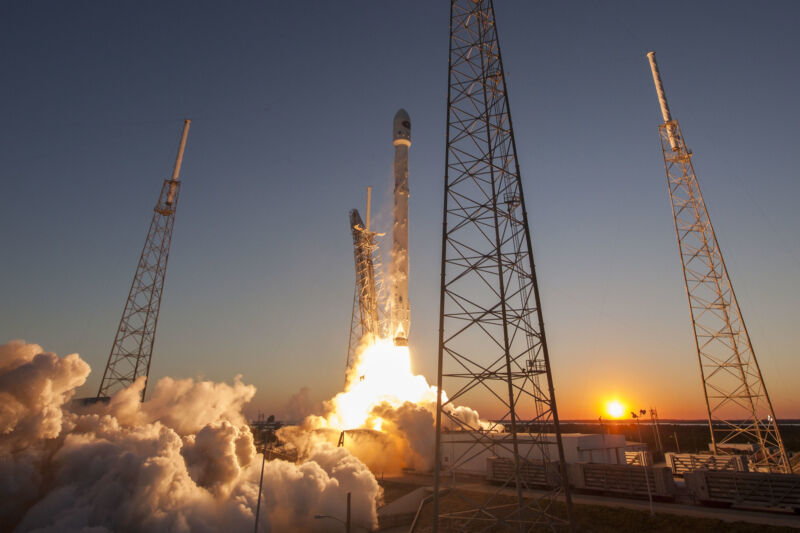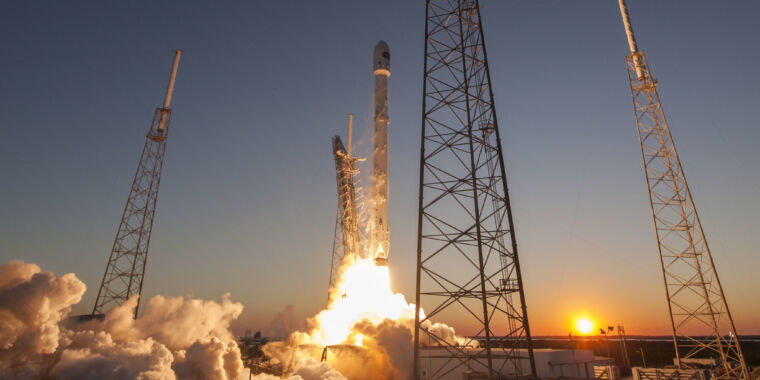
SpaceX
SpaceX launched its first interplanetary mission nearly seven years ago. After the Falcon 9 rocket’s second stage completed a long burn to reach a transfer orbit, NOAA’s Deep Space Climate Observatory began its journey to a Sun-Earth LaGrange point more than 1 million km from the Earth.
By that point, the Falcon 9 rocket’s second stage was high enough that it did not have enough fuel to return to Earth’s atmosphere. It also lacked the energy to escape the gravity of the Earth-Moon system, so it has been following a somewhat chaotic orbit since February 2015.
Now, according to sky observers, the spent second stage’s orbit is on course to intersect with the Moon. According to Bill Gray, who writes the widely used Project Pluto software to track near-Earth objects, asteroids, minor planets, and comets, such an impact could come in March.
Earlier this month, Gray put out a call for amateur and professional astronomers to make additional observations of the stage, which appears to be tumbling through space. With this new data, Gray now believes that the Falcon 9’s upper stage will very likely impact the far side of the Moon, near the equator, on March 4. More information can be found here.
Some uncertainties remain. As the object is tumbling, it is difficult to precisely predict the effects of sunlight “pushing” on the rocket stage and thus making slight alterations to its orbit. “These unpredictable effects are very small,” Gray writes. But they will accumulate between now and March 4, and further observations are needed to refine the precise time and location of the impact.
This information is important because it will allow satellites presently orbiting the Moon, including NASA’s Lunar Reconnaissance Orbiter and India’s Chandrayaan-2 spacecraft, to collect observations about the impact crater. With the LCROSS mission, NASA deliberately impacted a spent rocket upper stage into the Moon in 2009 for this purpose. Although scientists are most keen to understand the presence of ice at the lunar poles, being able to observe the subsurface material ejected by the Falcon 9 rocket’s strike could still provide some valuable data.
The dry mass of the Falcon 9’s second stage is about 4 metric tons, and it should impact the Moon at a velocity of about 2.58 km/s.
It’s likely that this will be the first time a piece of space hardware unintentionally strikes the Moon. Typically, during interplanetary missions, a rocket’s upper stage is sent into a heliocentric orbit, keeping it away from the Earth and its Moon.
For launches of spacecraft intended to orbit the Earth, the best practice is to reserve enough fuel in a rocket’s upper stage to return it to Earth’s atmosphere, where it will burn up. This is what SpaceX and most Western rocket companies customarily do to help control debris in low Earth orbit. The Moon, of course, has no atmosphere for the stage to burn up in.








